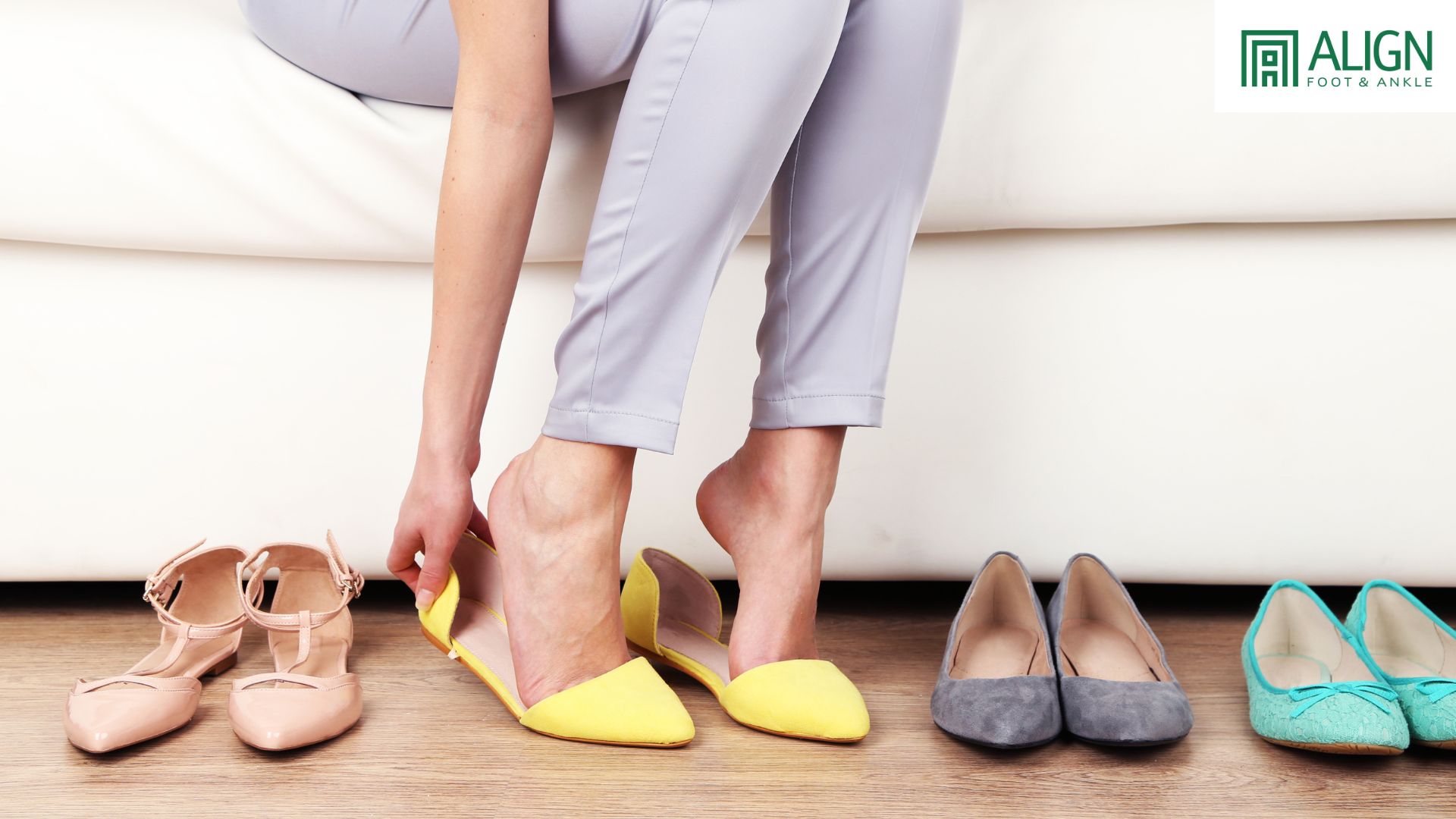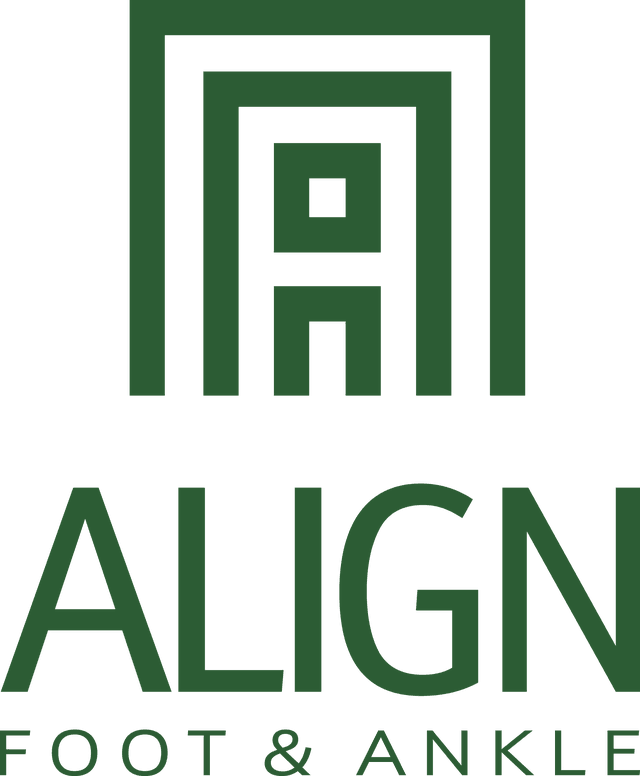Flat Shoes, Real Problems: Why Support Still Matters This Spring
As spring approaches, many people trade their boots for ballet flats, loafers, or minimal slip-ons. While these styles are fashionable and easy to wear, they often come with a hidden cost: they offer little to no support for your feet.
At Align Foot & Ankle, Dr. Thuy Ho-Ellsworth sees a spike in foot and heel pain each spring, often linked to seasonal footwear changes. Flat shoes may seem harmless—but they can seriously affect your foot health over time.
The Problem with Flats
Flats are often marketed as sleek, lightweight, and comfortable—but they usually lack the essential features your feet need to stay supported and pain-free. Most flat shoes:
- Have no arch support, putting strain on the plantar fascia
- Offer minimal cushioning, increasing impact stress on your heels
- Provide poor shock absorption, which can contribute to joint pain
- Have thin soles, offering little protection from uneven ground
- Encourage poor alignment, especially if your gait is already off balance
Over time, wearing flat shoes regularly can lead to foot fatigue, heel pain, and even chronic conditions like plantar fasciitis, tendonitis, and metatarsalgia (pain in the ball of the foot).
Why Flat Isn’t Functional
Dr. Ho-Ellsworth explains that your foot is designed to have natural curves and dynamic movement. The arch helps absorb shock and evenly distribute your body weight. Without proper support—like when wearing flat shoes—your foot’s biomechanics are compromised.
This can lead to issues that extend beyond your feet, such as:
- Ankle instability
- Shin splints
- Knee and hip pain
- Lower back discomfort
And if you’re already dealing with a foot condition like flat feet, overpronation, or nerve pain, flat shoes can make symptoms worse.
What to Wear Instead
Dr. Ho-Ellsworth doesn’t recommend flats for everyday use—but that doesn’t mean you have to sacrifice style for support. Look for alternatives that combine both:
Choose Supportive Flats
Some brands offer flats with built-in arch support, cushioned soles, and heel stabilization. Look for structured materials and avoid paper-thin soles.
Opt for Sandals or Sneakers with Contoured Footbeds
As the weather warms up, trade in unsupportive shoes for sandals or sneakers that offer anatomical arch support and proper heel cushioning.
Use Custom Orthotics
Custom orthotics can be placed into certain types of shoes—including some stylish flats and sneakers—to give your feet the personalized support they need. At Align Foot & Ankle, we offer both gait plate analysis and 3D scans to create high-quality orthotics tailored to your feet.
Already Feeling the Pain?
If your feet ache after a day in flats, it’s time to listen to your body. Dr. Ho-Ellsworth offers a variety of non-invasive treatments to relieve pain and prevent long-term damage, including:
- Remy Class IV Laser Therapy for heel and arch pain
- Regenerative injection therapy for inflamed tissues
- Custom orthotics for long-term structural support
- Education and footwear recommendations personalized to your lifestyle
Don’t Let Your Shoes Set You Back
Style shouldn’t come at the expense of comfort and function. Flat shoes may look effortless—but the strain they place on your feet can lead to problems that take weeks or months to recover from.
This spring, make sure your footwear works with your feet—not against them. Dr. Ho-Ellsworth and the team at Align Foot & Ankle are here to help you transition into the season supported, pain-free, and ready to move.
What to Wear Instead
Dr. Ho-Ellsworth doesn’t recommend traditional flats for everyday use—but that doesn’t mean you have to sacrifice style for support. This spring, consider shoe trends that offer both fashion and foot-friendliness.
Supportive Alternatives to Classic Flats
- Flatforms: These provide the lift of a heel with a flat, stable base that supports even weight distribution.
- Slight Kitten Heels: A small heel can actually reduce strain on the arch and Achilles tendon compared to completely flat shoes. Just make sure they have a cushioned footbed and stable heel.
- Supportive Sandals: Look for sandals with thicker soles, built-in arch support, and structured materials—avoid paper-thin soles and flexible, unsupportive designs.
Pairing style with function is possible, and your feet will thank you for choosing shoes that protect your long-term health
Schedule Your Appointment
Align Foot & Ankle
1600 W 38th St #408, Austin, TX
Call: 512-882-4911
Don’t forget to check out our socials for valuable insights and updates:



